
I kind you not when I say this.
It took me an entire one year of my MBA program to ‘feel’ what positioning is.
Sure, I always knew what the definition is. But what’s the point?
Positioning is probably the most crucial aspect of any business or any product out there. Breakthrough ideas don’t survive long if you haven’t positioned the product correctly. TATA Nano is a good example for this.
A common pursuit for marketers, who craft the brand or product strategies, is to crack this hard nut – What is Positioning in Marketing context? In one of the previous articles I discussed segmentation and targetting and how do marketers often go wrong in segmentation.
What took me so much time in getting a grip on this really basic concept was the way in which I was trying to learn it. With all kinds of definitions that I was reading everywhere, there was no way I could have really learned it enough to apply it anywhere.
But then, I realized that the simplest way to understand Positioning is through a formula.
And that was it.
Once I understood it in that manner, I could see so many examples around me who have utilized this Positioning Formula, that I will be sharing with you in this post.
Now, there are all sorts of definitions on offer for what is positioning in marketing. To be fair, most of them do a fairly decent job of giving a broad idea of what this really important concept is all about.
Positioning is usually defined as occupying a particular place in the mind of the consumer for your product or brand. The hypothetical coordinates of this position are based on your perception of how good or bad the product is. It is about creating a perception of the product that is (usually) different from how any other substitute on offer.
You would have often come across some fine pieces of art that marketers create on their canvass to explain positioning. These are called Perception Maps.
Take a look at some of these:
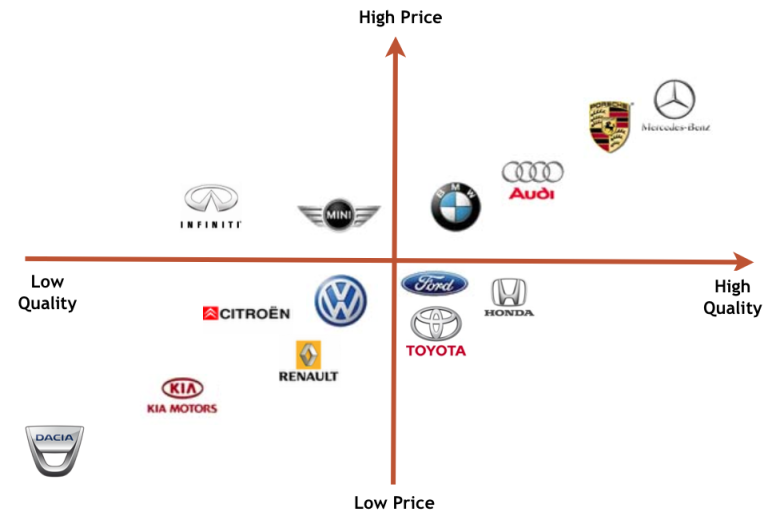
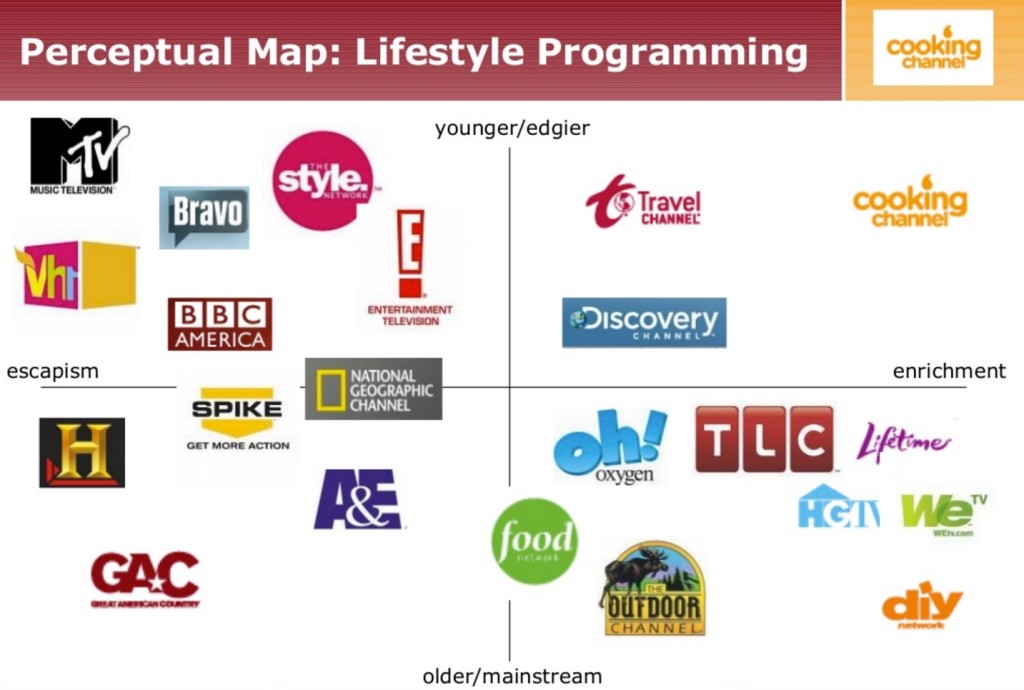
But what exactly are these apart from being scribblings of an expressive marketer? What do they convey?
Do they even have a meaning?
If yes, then how to make them with logic?
Beyond the realm of these definitions and perception maps, in all practicality, how would you really do the positioning of a product or a brand if asked to do?
It becomes crucial to understand what variables come together to define positioning and what nuances truly make it a unique positioning for your product or a brand.
Does Positioning always have to be unique?
Whether you are positioning a product or a brand (both terms are used interchangeably from here on) you are looking at occupying a unique space in the consumer’s mind. A place that no one else occupies so that you remain the choice of the consumer in that space.
Sure, your positioning need not always be different from that of the competitors. You could have two products with the exact same positioning in the mind of the consumer. In this situation, your product is easily replicable. And that is the point where your product is no more a product or a brand, it is just a commodity.
So, here’s the point. You want your positioning to be unique and strong. What you need more than positioning maps and definitions is a formula.
This article brings to you the Positioning Formula that eases the entire exercise of breaking your head behind crafting that successful positioning strategy for your brand.
Classical Answers to what is Positioning in Marketing
There are tons of definitions for ‘What is Positioning in Marketing’ or for ‘What is Brand Position in Marketing’ and for ‘What is Product Positioning in Marketing’.
In fact, there are so many definitions of not only positioning but of all these variants of it as well that I’m sure you would have come across quite a few of them by the time you would have found this article.
Take a look at these:
1. Jack Trout, in his 1969 article titled ‘Industrial Marketing’ described positioning as “a mental device used by consumers to simplify information inputs and store new information in a logical place”
2. Jack Trout is the co-author of an authoritative book on Positioning that goes by the name Positioning: The Battle for your Mind’.
In that book, another definition written by the author duo goes something like this: “Positioning is an organized system for finding a window in the mind. It is based on the concept that communication can only take place at the right time and under the right circumstances”
3. Later on, David Ogilvy put in some effort to bring about a consensus to what the definition of positioning is. He came up with his version of it which suggests that positioning is “what a product does, and who it is for”
4. Further, Philip Kotler comes by to define it as: “the way a product is defined by customers on important attributes – the place a product occupies in the customer’s mind relative to competing products”
5. And, in his famous book for marketing students, Marketing Management, he writes another version of the definition. Philip Kotler defines positioning as ‘the act of designing the company’s offering and image to occupy a distinctive place in the mind of the target market’
The fifth one is arguably the most marketer friendly definition of all of them written above. That definition, unlike others, does a better job at using some action verbs to tell the marketer what is he supposed to do to achieve positioning for his product.
However, a common thread among all the definitions is how all of them connect positioning with something inside the customers’ mind.
And therefore, all of those vague definitions mean that Positioning is basically a game of perception. Since, its a space you are occupying in your customers’ minds, we are playing a perception game! The impression of your brand and product is being talked about. A lot many emotions would also come in since we are talking a perception.
But what is a definition that doesn’t break the term down to its constituents?
Sure, positioning is a perception game. And therefore, quite a lot of it is external to you, mostly about how the customer perceives you to be. But what about that which you could control internally?
What is that part? And how do you control it?
What you need as a marketer is an actionable, execution-ready answer to what is positioning.
In fact, wouldn’t you also need a framework to understand what are the factors that affect positioning and how to control them?
This is exactly what I give you in this article, a clear-cut formula for Positioning that ensures that you understand each of its constituents and do a good job at it. I call it the Positioning Formula.
But, what really is Positioning?
Over the last few years with whatever I have read about Positioning and through all that I applied of it in my projects, I have been able to understand one simple thing.
Positioning as an activity is more internal to the organization than it is shown or believed to be.
Sure, you have read definitions above of how the entire idea of positioning has been left up for the consumer to build in his mind. And again I would reiterate, those definitions put stress in telling you how positioning is something that is external to the marketing process – in the mind of the consumer.
Now, this does make a marketer feel helpless and feel really less in control of his brand or product.
If yes, then the reason is that you have been looking at Positioning the wrong way! Because the definitions would tend to keep you confused about what is your role in positioning your product or brand.
And if you are one of those who are in this confusion then you definitely need this Positioning Formula that I finally break to you. Trust me, this is all you need to know about Positioning ever in your life.
Positioning = Target Segment + Differentiation
In other words, you get a position in the marketplace when you know who you are talking to, who you are going after (Target Segment) and when you show them how you are different from all the other products (Differentiation).
Now, if you ask me for 3 things that you must remember from this article, then I will tell you just 1. And that is this formula, Positioning = Target Segment + Differentiation.
Really, it’s that important for you as a marketer!
Let’s try and break this up for you to soak it in completely.
Marketing becomes easy when you see a flow of logic across everything you are learning and doing. You have your STP of marketing – Segmentation, Targeting and Positioning. This STP, more than an acronym, is a guideline in disguise for the marketers.
Everyone sees you and your products differently. You need to identify these different segments in the market. That’s segmentation for you. You further decide upon the target segments – the segments you would be going after.
And once you have done this targeting exercise you look at positioning. How do I put across my product to the consumers so that it creates an urge which makes them choose me over all of my competitors?
This is where the extra that you provide becomes important, whatever that you see as your uniqueness.
That, exactly, is Differentiation. And once you have differentiated your product for the target segment you are going for – you have successfully positioned your product distinctively in the mind of the consumer.
Therefore, there is no Positioning without Segmentation, Targeting and Differentiation.
Here, three really important things to highlight that should be intuitive but are totally worth mentioning:
1. Positioning is variable and depends on the target segment
2. So for each target segment there could be (and will be) different positioning
3. Points of differentiation will most likely be different for each target segment
Coming back to the Perception Maps
So, perception maps really aren’t such bad things actually. They are more than just musings of marketing strategists. They, in fact, are one of the easiest pictorial representations of positioning that we have.
It is really interesting to see how does this Positioning Formula explain the perception maps. Or rather how does the perception maps justify this formula.
My experience at the education company that I was a part of a few years back has given me a good share of knowledge about what the Indian business school scenario is like. In a brand conscious country like India, the things that work best are – obviously – brands.
So if I were to depict the positioning of each of the prestigious business schools, how shall the canvas look?
Now, again, positioning is not something that there is in a vacuum.
There has to be a frame of reference. The frame of reference is the is the particular parameter against which your target segment is are looking at your brand.
On top of that, the differentiation that the business school offers for that target segment determines the positioning of the business school for that target segment.
So you could have a segment that looks at B-schools entirely from the placement salary perceptive and the positioning of the B-school will be something like this:

There could be another segment that looks at the most pocket-friendly B-school and therefore, the positioning of the B-schools in this segment’s mind would be similar to this:
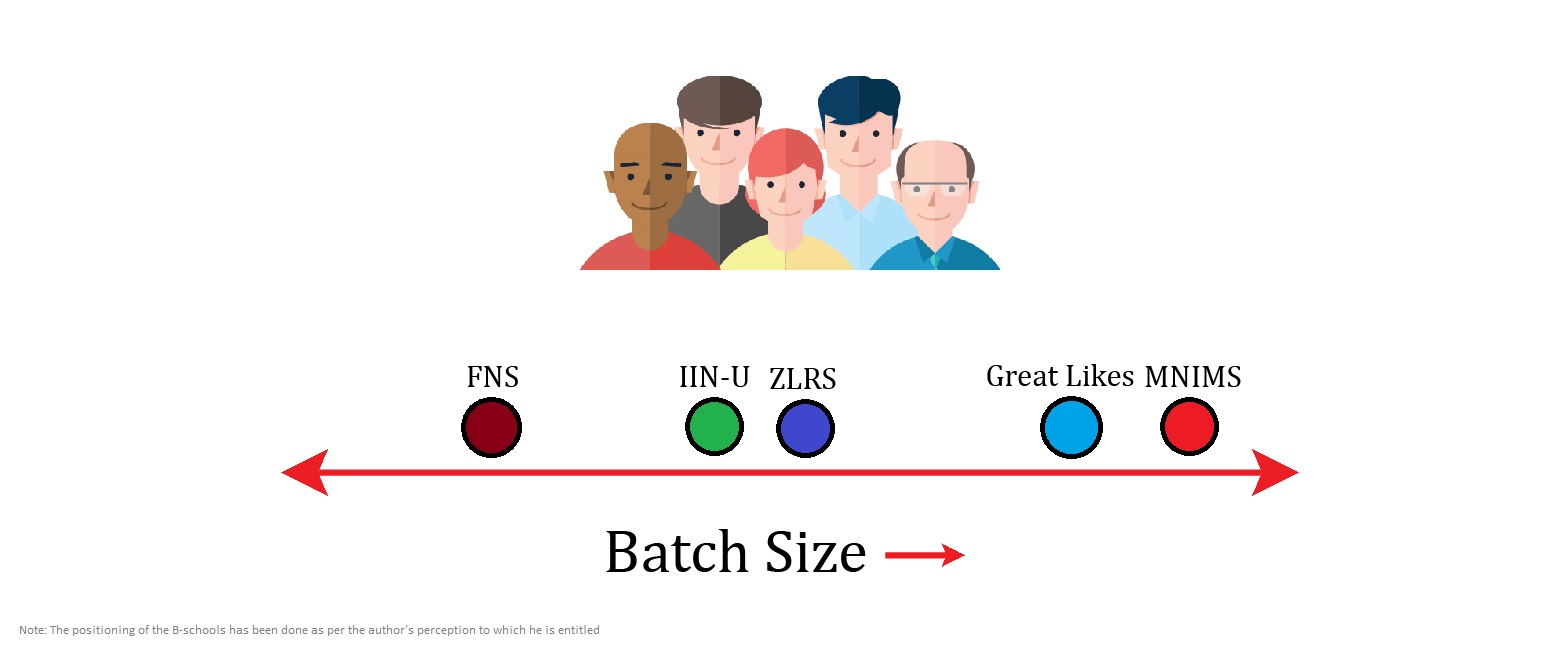
You can see both of these examples are evaluating the brands only on one axis, a single dimension.
Then there could be a segment that is trying to find a B-school brand that is a balance of economical fees and a good salary package – which gives us two factors to evaluate on.
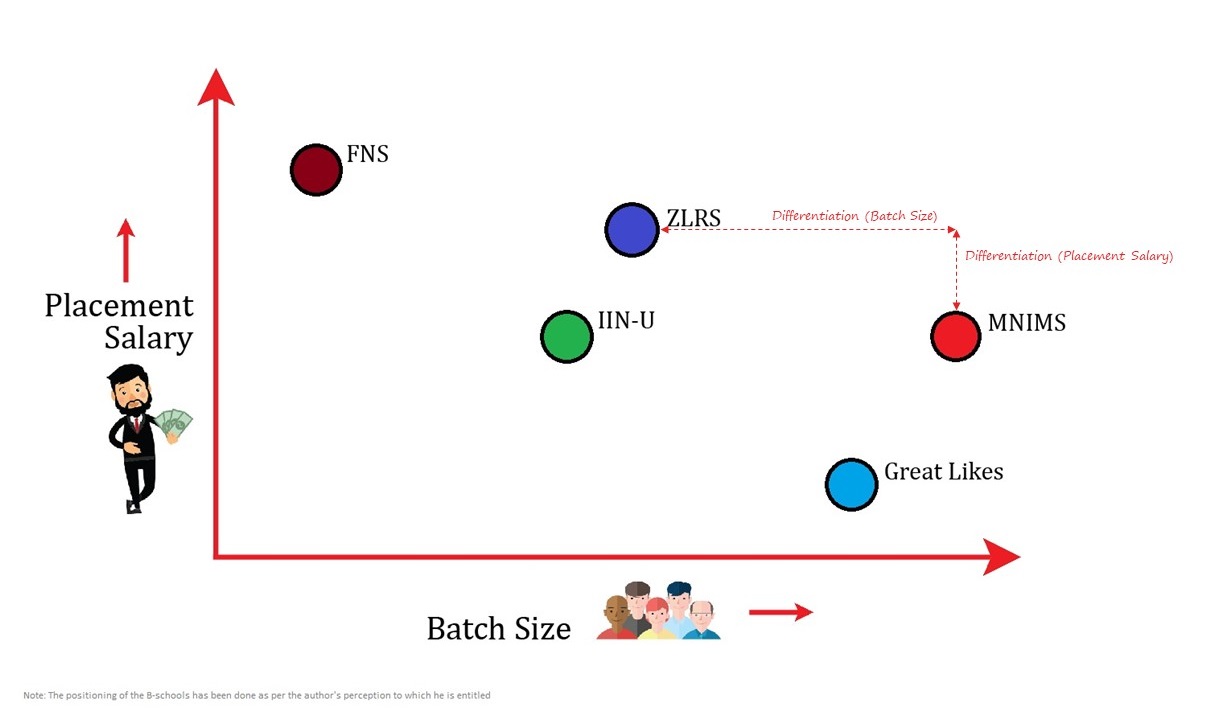
And while we are at it, do we really evaluate business schools on just two parameters?
No. And therefore:
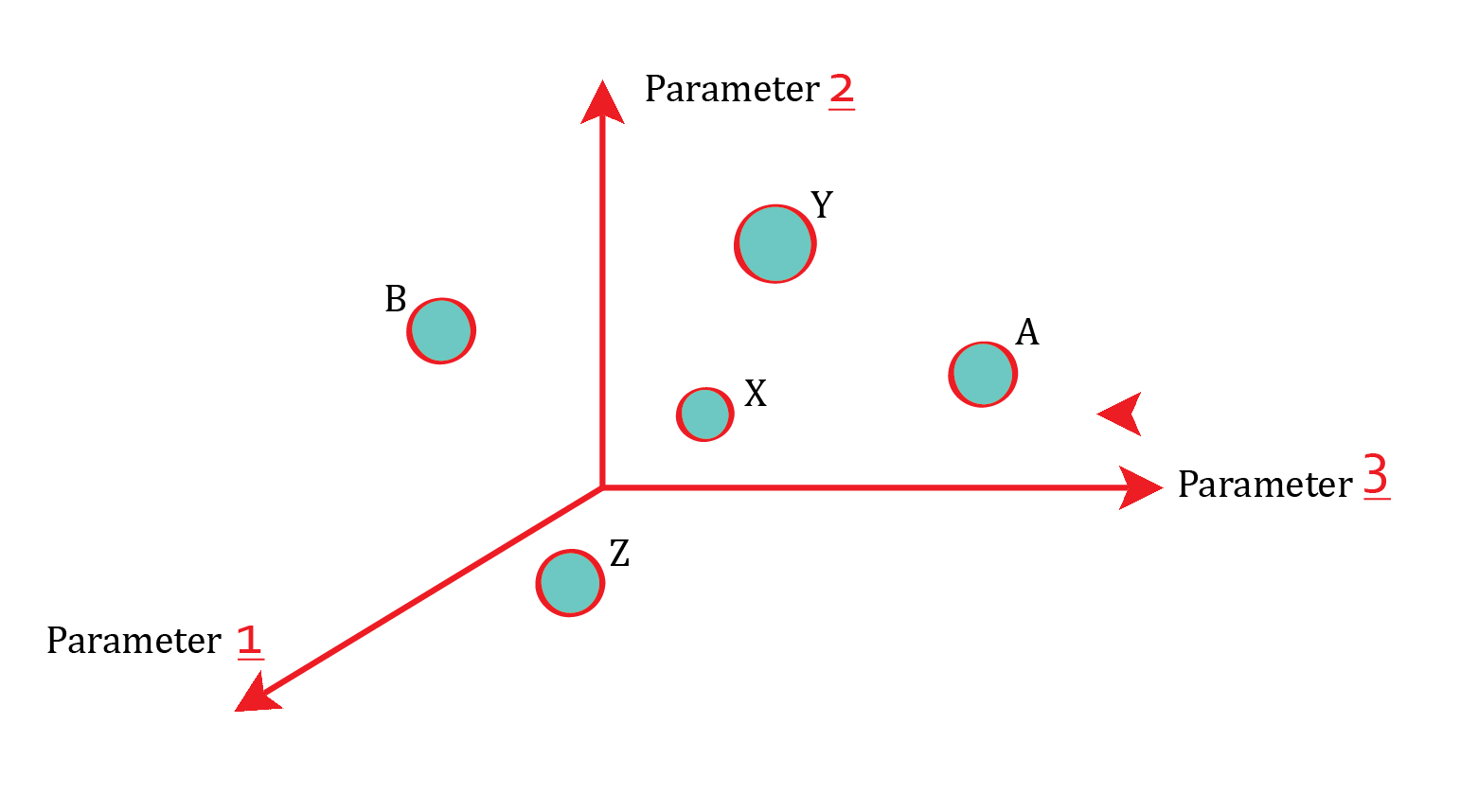
You could actually have three-dimensional perception maps. But these are rare. Not only because they are tough to draw but also because it is too complex to understand.
You could make it more comprehensible by creating three individual two-dimensional maps for x-y axis, y-z axis and x-z axis.
Moving on.
It’s worth mentioning again that this perception map is to be populated by the getting a sense of what the customers and the market thinks of you as the brand/product.
For example, in this narrative, if I am doing this exercise as the Brand Manager of my college, it matters in the least of what I think of my college.
It’s all about the perception of the target segments.
The Viagra-Cialis Example
One of my most favorite stories about Positioning is a tale of two pills.
It is about erectile dysfunction. When you think about erectile dysfunction you probably also think about this brand called Viagra. Also, not far away in your mind from Viagra would be another brand, equally effective, called Cialis.
With this example, I aim to give you a real-life example of Positioning coming into the picture and tell you about what is positioning in marketing.
And again I’ll tell you, doesn’t matter if you remember nothing in this entire blog post, the only thing you need to take away for yourself is the Positioning Formula i.e.
Positioning = Target Segment + Differentiation
Now in 1998, Viagra came up with a product that solved a real problem. When men get older, they lose the ability to get intimate. And with this one pill that Viagra is, they were able to rekindle the sex life of these people.
What is interesting here is that when Viagra came to the market, they were the only ones doing this.
It is obvious that they were going after the men for this product. That was their target segment. Their positioning of the product was around the personality of the people they got on board for promoting it.
They got on board Bob Dole, a 70-year-old war-veteran who also once ran for the presidency of the US.

Over and above all the things that Bob Dole was, he was a good embodiment of what someone would call ‘a real man’, a war hero. Machismo and maturity.

And that’s exactly what Viagra’s positioning was, a man’s product.
Return to your manhood, be the hero again.
In fact, that is what eventually led to Viagra’s subsequent choices of brand ambassadors, other really strong masculine personas.
When you are the only player in the market, in that category, you will be a success. That’s what was true for Viagra as well. Viagra became so successful that it was no longer just a product but was the entire product category. Just like Xerox is.
A few years after that, in comes Cialis. Another product that solves the exact same problem with an exactly similar type of a product, i.e. a tablet.
Imagine, for Cialis, it was like going against someone with a 100% market share.
But, the product that Cialis came up with was a really good one. Cialis came across as a good in terms of at least three parameters.
- Cialis was safer for health with lesser side effects than Viagra.
- It was easier to digest and,
- It had a longer, so to say, the window of opportunity. So while Viagra lasted 3-4 hours, Cialis lasted for around 12-14 hours.
A great amount of thought went in deciding who would be the target segment. Who else was important in this entire transaction, an important stakeholder.
Sure, it was the doctor who prescribed the medicine. You are taking care of a good amount of sales through that. But that’s not positioning yet.
Who else was one of the main stakeholder?
The female?
Yes.
The female was a big part of this entire product idea and of its utilization. And that’s what Cialis chose to do. It went after both the man and the woman as a couple. The couple was the target segment.
Yes, sure. Viagra. Man. Manhood. Tough guy.
But, get your romance back with Cialis.
They had three points of differentiation as I listed down above. They didn’t go for the health or the digestion point. What they went for was the duration point of difference – the fact that Cialis lasted longer than Viagra.
This perfectly fit the bill. Cialis ensured that they position themselves really distinctly from Viagra. Cialis sort of intuitively utilized the concept of positioning formula and here they were with a distinctive and equally strong identity.
Positioning of Viagra = Man + Manhood
Positioning of Cialis = Couple + Romance
And it paid off too with Cialis taking control of a larger share of the market since a few years back. What is worth noting here is that the differentiation has to be something for real and not made up.
This means that the product actually has to have something distinct, unique and more useful to the customer for it to position itself differently.
Conclusion
For a marketer like you, understanding that what is positioning in marketing is extremely crucial. While positioning is mostly understood as a concept external to the company, something associated with the minds of the customer, it is much more beneficial to understand it as a formula.
This post brought to you a must-remember Positioning Formula and substantiated it with an example of how Cialis positioned its product successfully in front of Viagra, exactly on the lines of the Positioning Formula.






